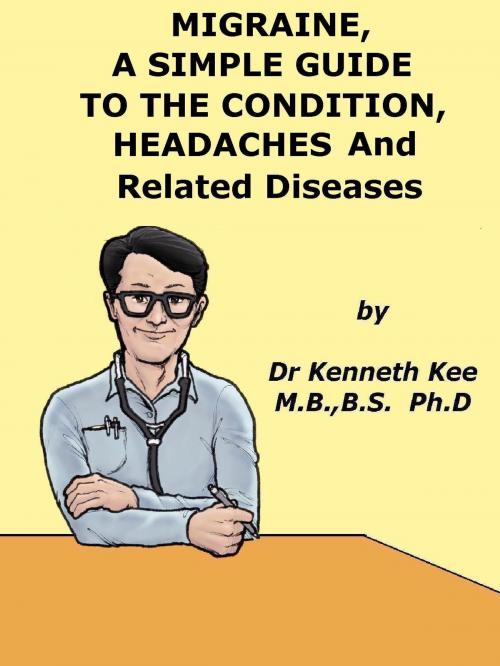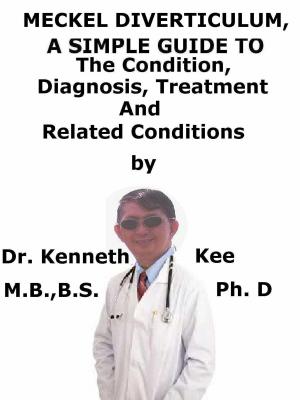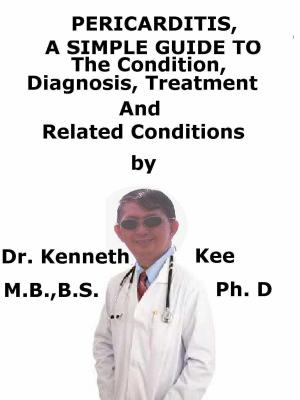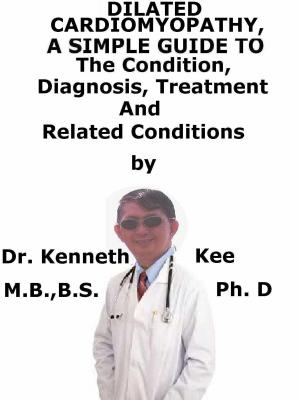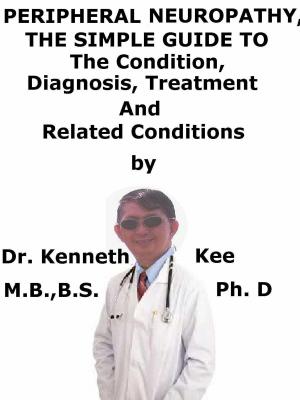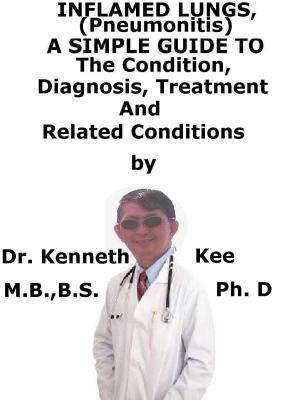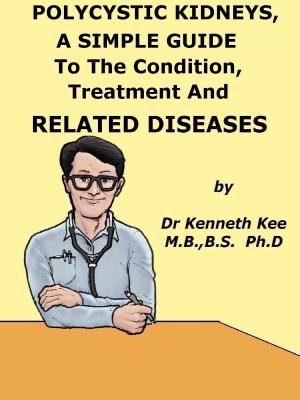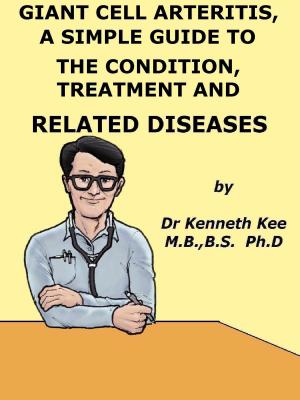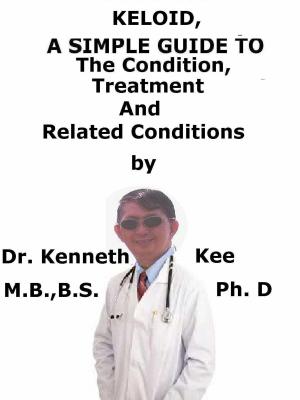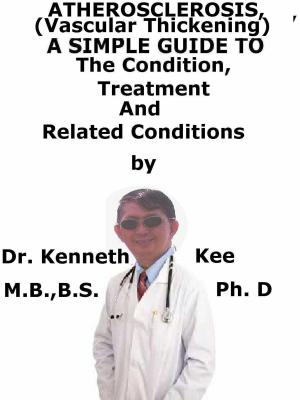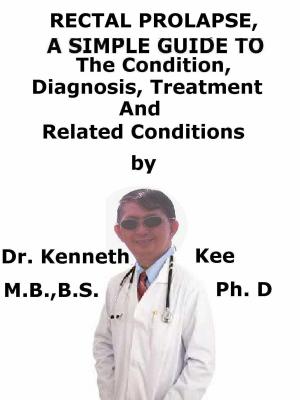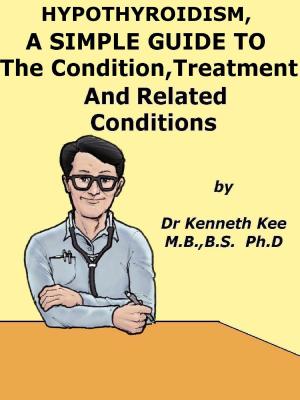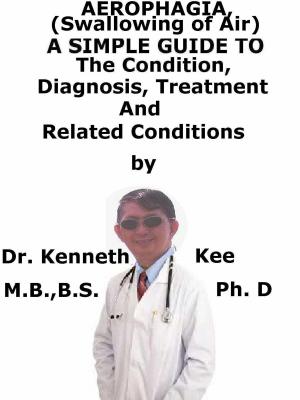Migraine, A Simple Guide to the Condition, Headaches and Realated Diseases
Nonfiction, Health & Well Being, Health, Ailments & Diseases, Nervous System & the Brain, Medical, Specialties, Internal Medicine, Neurology| Author: | Kenneth Kee | ISBN: | 9781311615404 |
| Publisher: | Kenneth Kee | Publication: | December 3, 2014 |
| Imprint: | Smashwords Edition | Language: | English |
| Author: | Kenneth Kee |
| ISBN: | 9781311615404 |
| Publisher: | Kenneth Kee |
| Publication: | December 3, 2014 |
| Imprint: | Smashwords Edition |
| Language: | English |
Migraine you are a pain in my head
Sometime you make wish I was dead
The pain you give me is so excruciating
One side of my head keeps on throbbing
Migraine first appear between the ages of 10 and 45
Some people have an aura that the migraine will arrive
Seeing stars or zigzag lines, blurred vision or yawning
Trouble finding the right words or concentrating
After the aura the migraine begins on one side of the head
The pain is also behind the eyes, something to dread
Because the pain is so bad, I wish to end my life
Give me something to stab my head like a knife
The slightest noise or a sudden glaring light
Will make me hide in a dark quiet room hoping for night
I cannot sleep, I cannot eat, smell can trigger the migraine
Medicine, injections, nothing seems to stop the pain
One day I will be able to get rid of you
You will be gone using drugs that are new
-An original poem by Kenneth Kee
Interesting Tips about the Migraine
A Healthy Lifestyle
1. Take a well Balanced Diet
2. The goal is to treat your migraine symptoms right away.
Prevent symptoms by avoiding or changing your triggers.
Medications may include:
a. Antidepressants such as amitriptyline or venlafaxine
b. Blood pressure medicines such as beta blockers (propanolol) or calcium channel blockers (verapamil)
c. Seizure medicines such as valproic acid, gabapentin, and topiramate
3. Keep bones and body strong
Bone marrow produces our blood
Eat foods rich in calcium like yogurt, cheese, milk, and dark green vegetables.
Eat foods rich in Vitamin D, like eggs, fatty fish, cereal, and fortified milk.
Eat food rich in Vitamins B and C such as green vegetables and fruits
Zinc and other minerals are important to the body
4. Get enough rest and Sleep
Avoid stress and tension
5. Exercise and stay active.
It is best to do weight-bearing exercise such as walking, jogging, stair climbing, dancing, or lifting weights for 2½ hours a week.
One way to do this is to be active 30 minutes a day at least 5 days a week.
Begin slowly especially if a person has not been active.
6. Do not drink more than 2 alcohol drinks a day for a man or 1 alcohol drink a day for a woman.
Alcohol use also increases the chance of falling and breaking a bone.
Alcohol can trigger the migraine.
7. Stop or do not begin smoking.
It also interferes with blood supply and healing.
Cigarettes contain more than forty types of hazardous and possibly cancer causing chemicals which can harm the smokers and those around them.
Smoking or exposure to smoke can trigger migraine
Chapter 1
Migraine
The migraine is the second most common type of headache that may be so intense and debilitating that people with migraine are unable to work.
Migraine can occur with symptoms such as nausea, vomiting, or sensitivity to light.
In many people, a throbbing pain is felt only on one side of the head.
Each migraine can last from four hours to three days.
Occasionally, it will last longer.
Migraines have a tendency to run in families.
Four out of 5 migraine sufferers have a family history of migraines.
If one parent has a history of migraines, the child has a 50% chance of developing migraines and if both parents have a history of migraines the risk jumps to 75%.
Migraines may run in families
Migraine headaches tend to first appear between the ages of 10 and 45.
Sometimes they may begin later in life.
Migraines occur more often in women than men (5 to 1).
Some women but not all may have fewer migraines when they are pregnant.
Table of Content
Introduction
Chapter 1 Migraine
Chapter 2 Interesting Facts about Migraine
Chapter 3 Headaches in General
Chapter 4 Facial Pain
Chapter 5 Temporal Arteritis
Chapter 6 Encephalitis
Chapter 7 Brain and Head Injury
Chapter 8 Cerebral Aneurysm
Chapter 9 Brain Cancer
Migraine you are a pain in my head
Sometime you make wish I was dead
The pain you give me is so excruciating
One side of my head keeps on throbbing
Migraine first appear between the ages of 10 and 45
Some people have an aura that the migraine will arrive
Seeing stars or zigzag lines, blurred vision or yawning
Trouble finding the right words or concentrating
After the aura the migraine begins on one side of the head
The pain is also behind the eyes, something to dread
Because the pain is so bad, I wish to end my life
Give me something to stab my head like a knife
The slightest noise or a sudden glaring light
Will make me hide in a dark quiet room hoping for night
I cannot sleep, I cannot eat, smell can trigger the migraine
Medicine, injections, nothing seems to stop the pain
One day I will be able to get rid of you
You will be gone using drugs that are new
-An original poem by Kenneth Kee
Interesting Tips about the Migraine
A Healthy Lifestyle
1. Take a well Balanced Diet
2. The goal is to treat your migraine symptoms right away.
Prevent symptoms by avoiding or changing your triggers.
Medications may include:
a. Antidepressants such as amitriptyline or venlafaxine
b. Blood pressure medicines such as beta blockers (propanolol) or calcium channel blockers (verapamil)
c. Seizure medicines such as valproic acid, gabapentin, and topiramate
3. Keep bones and body strong
Bone marrow produces our blood
Eat foods rich in calcium like yogurt, cheese, milk, and dark green vegetables.
Eat foods rich in Vitamin D, like eggs, fatty fish, cereal, and fortified milk.
Eat food rich in Vitamins B and C such as green vegetables and fruits
Zinc and other minerals are important to the body
4. Get enough rest and Sleep
Avoid stress and tension
5. Exercise and stay active.
It is best to do weight-bearing exercise such as walking, jogging, stair climbing, dancing, or lifting weights for 2½ hours a week.
One way to do this is to be active 30 minutes a day at least 5 days a week.
Begin slowly especially if a person has not been active.
6. Do not drink more than 2 alcohol drinks a day for a man or 1 alcohol drink a day for a woman.
Alcohol use also increases the chance of falling and breaking a bone.
Alcohol can trigger the migraine.
7. Stop or do not begin smoking.
It also interferes with blood supply and healing.
Cigarettes contain more than forty types of hazardous and possibly cancer causing chemicals which can harm the smokers and those around them.
Smoking or exposure to smoke can trigger migraine
Chapter 1
Migraine
The migraine is the second most common type of headache that may be so intense and debilitating that people with migraine are unable to work.
Migraine can occur with symptoms such as nausea, vomiting, or sensitivity to light.
In many people, a throbbing pain is felt only on one side of the head.
Each migraine can last from four hours to three days.
Occasionally, it will last longer.
Migraines have a tendency to run in families.
Four out of 5 migraine sufferers have a family history of migraines.
If one parent has a history of migraines, the child has a 50% chance of developing migraines and if both parents have a history of migraines the risk jumps to 75%.
Migraines may run in families
Migraine headaches tend to first appear between the ages of 10 and 45.
Sometimes they may begin later in life.
Migraines occur more often in women than men (5 to 1).
Some women but not all may have fewer migraines when they are pregnant.
Table of Content
Introduction
Chapter 1 Migraine
Chapter 2 Interesting Facts about Migraine
Chapter 3 Headaches in General
Chapter 4 Facial Pain
Chapter 5 Temporal Arteritis
Chapter 6 Encephalitis
Chapter 7 Brain and Head Injury
Chapter 8 Cerebral Aneurysm
Chapter 9 Brain Cancer
